Fix: The local printer spooler service is not running
This error message can occur when you add a new printer to your computer or send print operations to an existing printer in the network. There are several reasons why the Print Spooler service might stop or not start automatically at all. These reasons can range from your Windows Firewall to your printer drivers, among multiple other factors.
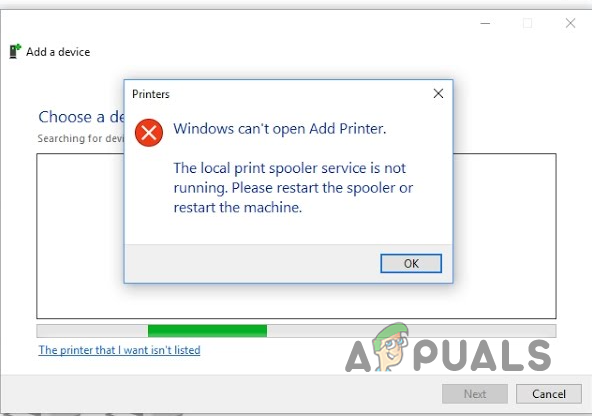
When the Print Spooler service is down, you will not be able to interact with your printer. This is because the Print Spooler service acts as a communication bridge and facilitates the interactions you wish to have with your printer. Therefore, ensuring the service runs in the background without any issues is a high priority.
In this article, we will guide you through several methods you can use to rectify the problem. As it turns out, the cause of the error message can vary in each case, which is why it is essential that we examine the possible sources of the issue before diving into the solutions. With that in mind, let’s start right away.
- Windows Defender Firewall interfering with the connection – One of the reasons that can result in the error message in question is the Windows Defender Firewall. This happens when the Windows Firewall prevents your computer from sending the request due to a false positive. As a result, the Print Spooler service is affected Is kept at bay, unable to perform its tasks. The service may stop running in such situations, resulting in an error message. When this occurs, you will need to disable your Windows Firewall temporarily to fix the issue.
- Windows Update bug – Another cause for the Print Spooler failing to start, which can be a problem with a specific update. This has been reported by several users who experienced the same issue. In most cases, the issue was resolved by a new update. If this case is applicable, you must check for any pending updates and install them on your computer.
- Malfunctioning Printer Drivers – As it turns out, the printer drivers you are using on your system can also cause the issue at hand. This can happen when the drivers malfunction or become damaged due to a recent Windows update. In such a scenario, you will need to reinstall the proper drivers to resolve the issue.
- Windows file corruption – System file corruption can result in various issues. The Print Spooler service is no exception, as it is part of the operating system for facilitating printing jobs. You can get rid of corruption through a couple of built-in utilities, i.e., SFC (System File Checker) and DISM (Deployment Image Servicing and Management).
- Intervention of third-party programs – Interference from a third-party program on your computer is not new; rather, it occurs frequently. As it turns out, in some cases, third-party programs on your computer can interfere with the Print Spooler service, resulting in the service malfunctioning. These issues can often be traced back to security software or the printing programs responsible for your printer.
- Damage to existing print files – Any previous or pending printing tasks are stored on your computer within a specific directory. In some cases, corruption of these files in your Windows directory can cause the service to malfunction. The service spools these files to the printer to perform the printing task. In such a case, you will have to remove those files to fix the error message..
- Duplicate printers – Finally, if you have multiple printers on your network, the issue can also arise due to duplication. Duplication can occur when you have multiple printers connected to the same port or IP address. In such a scenario, you will need to remove the duplicate printers to get everything back to working properly.
Now that we have gone through various possible causes of the issue in question, let us start going through the possible solutions you can implement to resolve the error message.
1. Set the Print Spooler Service to automatic.
If the Print Spooler service cannot start automatically when required, you will not be able to perform any printing jobs. This can happen when the service’s startup type is set to manual. In that case, you will have to manually start the service before performing any print tasks.
When you begin troubleshooting the problem in question, you first need to ensure that the Print Spooler service can start automatically. If the service is not running in the background when you attempt to issue any printing commands, your system will be unable to communicate with the printer.
If this case is applicable, you will need to change the service’s startup type so it can start automatically whenever needed. To do this, follow the instructions below:
- First, open the Run dialogue box by pressing the Windows key + R on your keyboard.
- In the Run dialogue box, type “services.msc” and then press Enter.

Opening up Services - In the Services window, look for the Print Spooler service. You can press P on your keyboard to jump to services starting with the letter P. This should make the search easier.
- Once you find the Print Spooler service, double-click on it to open the Properties window.
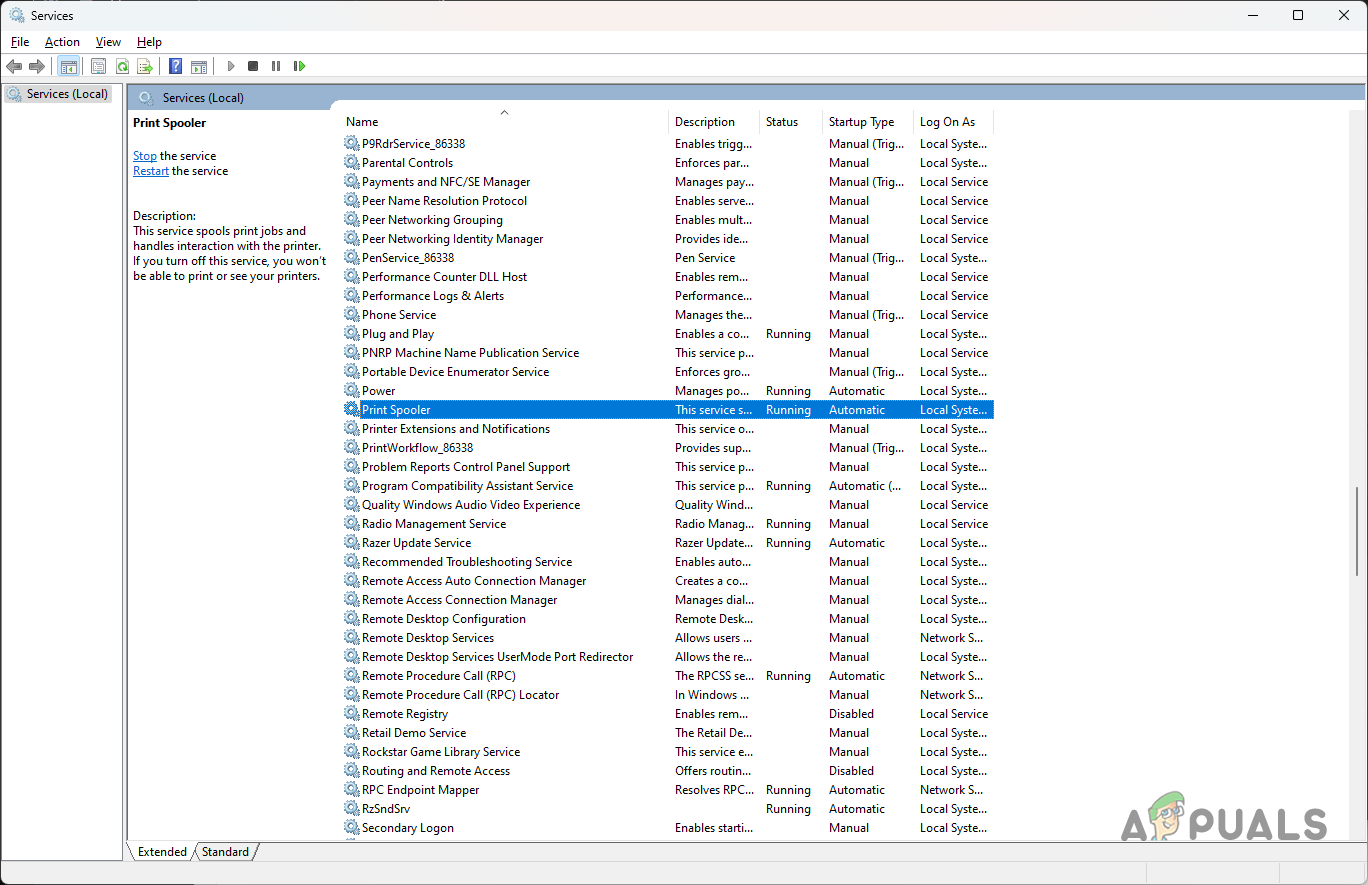
Print Spooler Service - In the Properties window, change the Startup type to Automatic
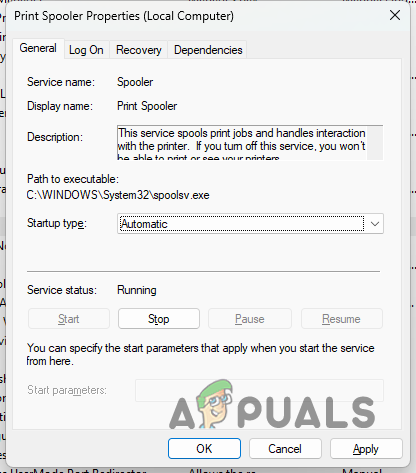
Print Spooler Service Properties - Click “Apply,” and then hit “OK.
- See if the error comes up again.
If you still face the error message, move on to the next fix below.
2. Edit the Print Spooler Service Configuration.
If changing the startup type of the Print Spooler to automatic does not fix the issue for you, you can try configuring the service even further as a possible solution. As it turns out, there have been reports of users resolving the problem in question by altering the computer’s response when the service fails.
You can do this from the properties window of the service. You have the ability to specify actions for the first, second, and subsequent failures of the service. To do this, follow the instructions below:
- Open the Run dialog box by pressing the Windows key + R shortcut.
- Type “services.msc” in the Run dialogue box and press Ente.

Opening up Services - Locate the Print Spooler service and double-click on it to open the Properties window.

Print Spooler Service - In the Properties window, switch to the Recovery tab.
- There, select the ‘Restart Service‘ option for ‘First Failure,’ ‘Second Failure,’ and ‘Subsequent Failures.’ This will restart the print spooler service upon any failures it encounters.

Changing Print Spooler Recovery Actions - Once you have done that, click “Apply” and “OK.” Check if the error message disappears with this action.
3. Remove duplicate printers (if applicable).
One of the reasons the problem occurs is when multiple printers share the same port or IP address. This can be helpful when the error message occurs only on specific systems in your network. When this happens, you need to check if the systems use the same network printer.
If this case is applicable, you must remove the duplicate printers, which should do the trick for you. Removing devices from your computer is a straightforward process with the help of the Control Panel. Follow the instructions below to do this:
- First, open the Control Panel by searching for it in the Start Menu.

Opening up Control Panel - In the Control Panel window, navigate to Hardware and Sound.

Control Panel - There, click on the Devices and Printers option.
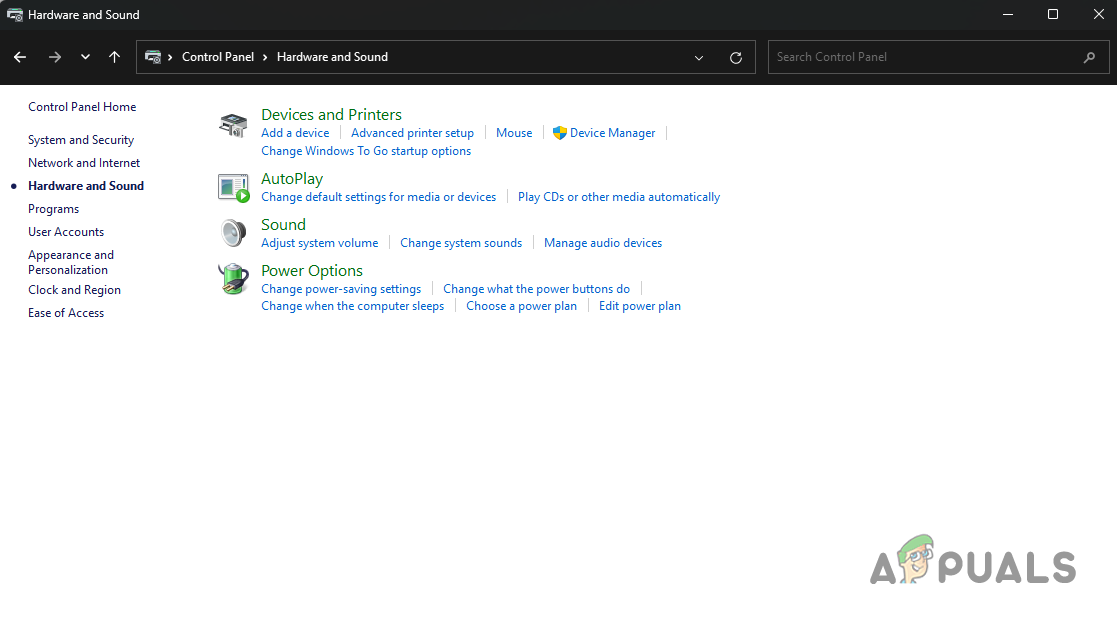
Navigating to Devices and Printers - Now, if you are using Windows 11, a Settings window should appear.
- On the Settings window, click on Devices.

Navigating to Devices - There, at the bottom, click on the ‘More devices and printer settings‘ option.

Accessing Additional Devices and Printers Settings - After that, in the Devices and Printers window, locate the duplicate printers and right-click on them.
- From the drop-down menu, choose the ‘Remove device‘ option. See if this resolves the issue.
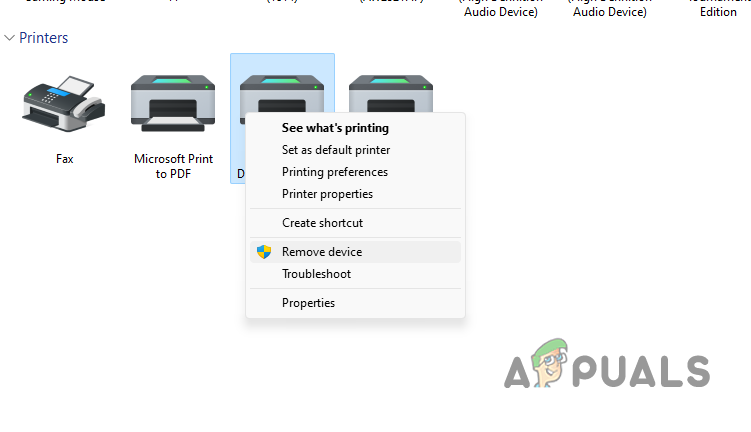
Removing Printer
If you are still experiencing the error message, proceed to the following method below.
4. Install pending Windows updates.
As it turns out, in some cases, Windows updates can cause issues with certain operating system components. While Windows updates bring new features and patches for known bugs, specific updates can be problematic. However, such issues are often resolved in subsequent updates.
Many users have reported that they began facing the issue after installing a specific Windows update. Additionally, there have been claims of the issue being resolved in subsequent updates. As such, if you are someone who has not installed any updates recently, doing so might be a good option, as it could potentially fix the problem for you. Follow the instructions below to install any pending updates:
- To begin, open the Settings window by pressing the Windows key + I on your keyboard.

Windows Settings - In the Settings window, navigate to Windows Updates.
- Once you are there, click on the “Check for Updates” button to download and install any pending updates.
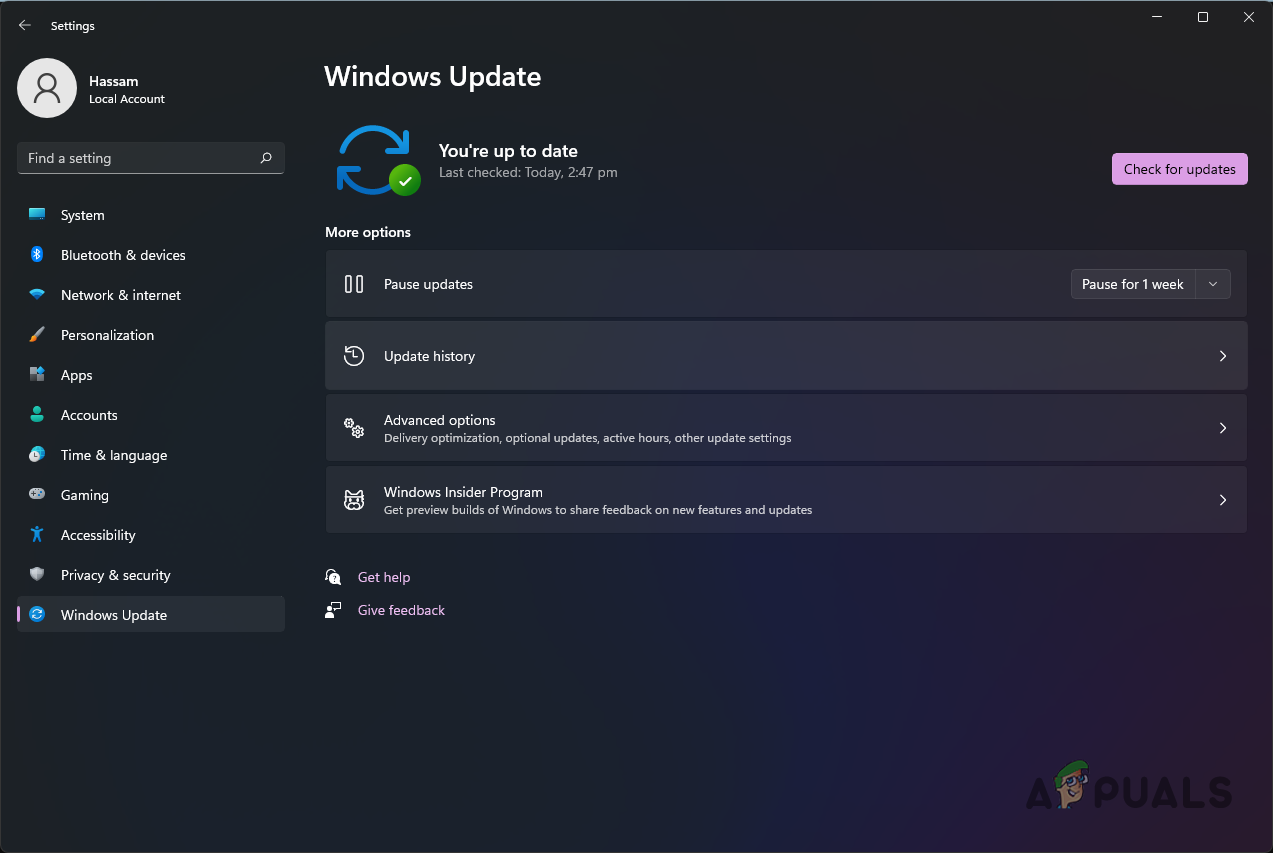
Checking for Windows Updates - Wait for the updates to install. Your computer will restart automatically during the process. After that, check if the problem persists.
5. Disable the Windows Defender Firewall.
The Windows Defender Firewall is a vital part of the Windows operating system. As the name suggests, the Windows Defender Firewall monitors your computer’s incoming and outgoing connections. As a result, it helps keep your computer secure on the internet.
In some scenarios, the Windows Defender Firewall may be the culprit for the error message in question. This can occur when the Windows Firewall does not allow spooler requests to go through correctly. If this case is applicable, you will need to temporarily disable the Windows Defender Firewall to resolve the issue. To do this, follow the instructions provided below:
- First, open up the Control Panel by searching for it in the Start Menu.

Opening up Control Panel - On the Control Panel window, navigate to System and Security.

Control Panel - There, click on the Windows Defender Firewall option.

Navigating to Windows Defender Firewall - Now, on the Windows Defender Firewall screen, click the ‘Turn Windows Defender Firewall on or off’ option on the left-hand side.
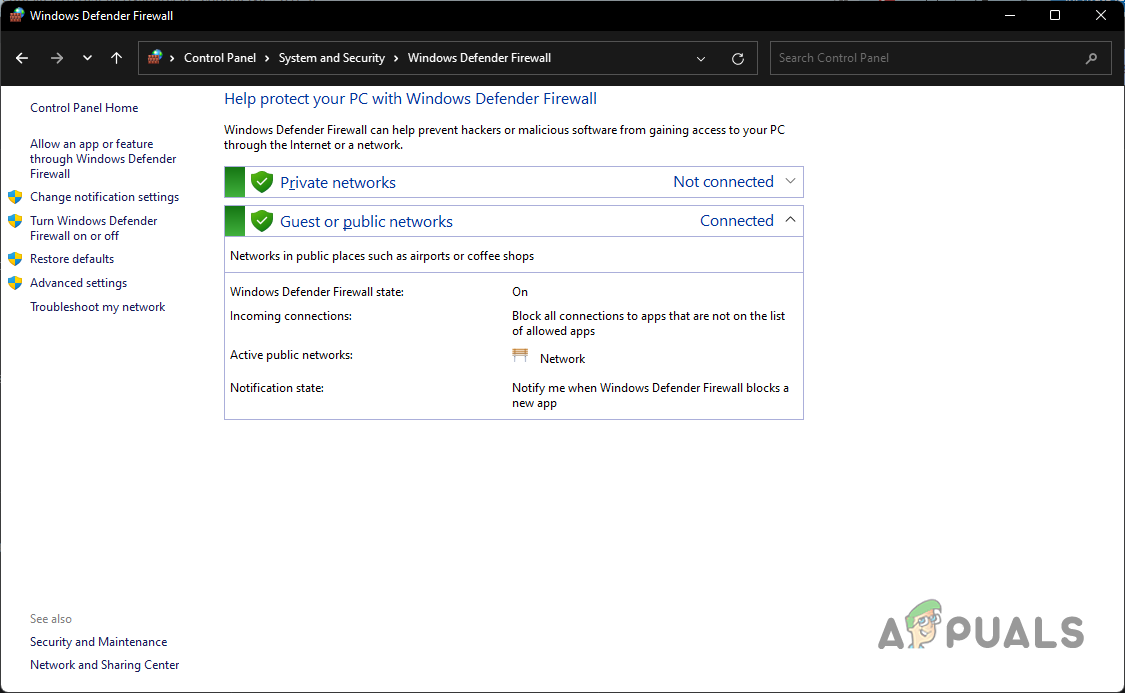
Windows Defender Firewall Settings - Then, click the “Turn off Windows Defender Firewall” option for both Public and Private networks.

Turning off Windows Defender Firewall - Finally, click OK to save the changes.
- See if the issue goes away with this.
If the problem no longer persists, you can try adding your printer software to the firewall’s whitelist. Once you do this, the firewall will allow any requests made by the software, and the issue should not resurface. In addition, you will be able to turn the firewall back on. Follow the instructions below:
- On the Windows Defender Firewall screen, click on the ‘Allow an app or feature through Windows Defender Firewall‘ option.

Navigating to Allowed Apps Section - There, click on the “Allow another app” button.

Windows Defender Firewall Allowed Apps - After that, click on the ‘Browse‘ button and navigate to the installation directory of your printing software. Open the executable file.

Allowing a New App Through Windows Defender Firewall - Once you do that, click on the Network Types button and check both the Public and Private checkboxes.
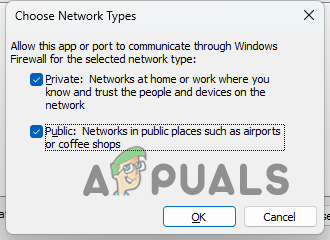
Changing Network Types - Finally, click ‘Add‘ and then hit ‘OK
6. Close third-party programs.
According to several user reports, the error message can also occur due to the interference of a third-party program with the Print Spooler service. Background processes interfering with another process are not new, and they happen all the time. This is especially true for any computer security programs you might use.
However, the problem may not be due solely to a third-party security program. Any process running in the background can be the culprit. Some users have reported HP Wolf Security as the culprit. Therefore, we recommend closing any unnecessary third-party programs running in the background.
Once you close the unnecessary programs, check if the error message goes away. If it does not, move on to the next fix below.
7. Delete the printer files.
As it turns out, the spooler sends files you wish to print to a folder inside the Windows directory. These files exist in the respective directory for the purpose of any pending print tasks. However, in some cases, corruption or damage to these files can result in the malfunction of the Print Spooler service.
When this occurs, you will need to clear out the contents of the respective folder to resolve the issue. To accomplish this, you will require administrative privileges, as the folder resides in the Windows installation directory. With that in mind, please follow the instructions below:
- First of all, open up a File Explorer window.
- Using the File Explorer window, navigate to the C:\Windows\System32\spool\PRINTERS directory.

Navigating to Printers Folder - Once there, delete all the files inside.
- After doing that, restart your system.
- Once your PC boots up, see if the problem still occurs.
8.Reinstall the printer drivers.
Drivers are essential in the Windows operating system, as they are used for communication with their respective hardware. There have been reports of error messages occurring due to faulty or malfunctioning drivers. It turns out that if the drivers on your system for your printer are not working correctly, you will not be able to use your printer.
If this case is applicable, you will need to uninstall your current printer drivers and then reinstall them. Doing so will also update the drivers, as you will be downloading them fresh from your printer’s manufacturer. To do this, follow the instructions below:
- To begin, open the Device Manager window by searching for it in the Start Menu.
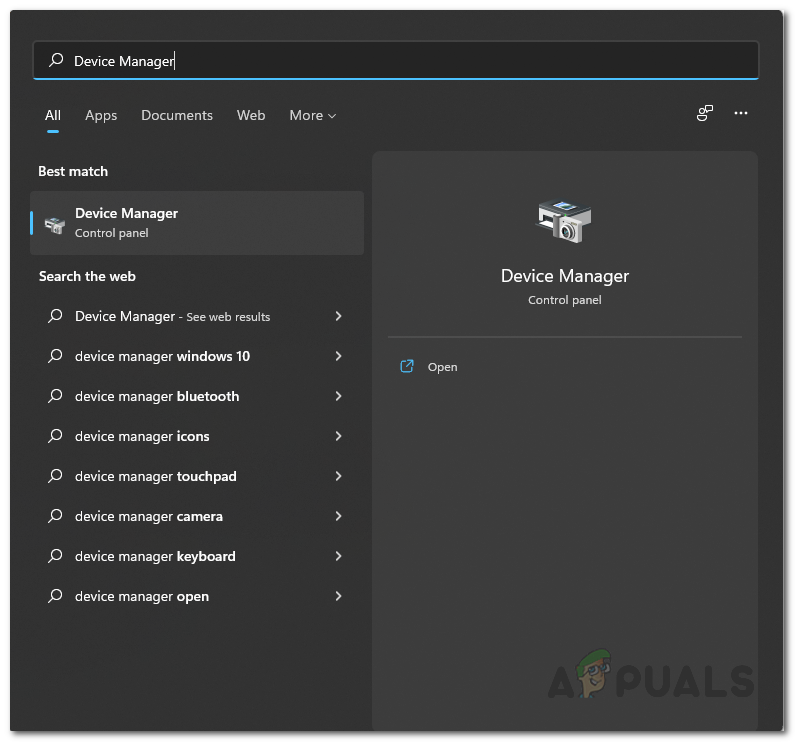
Opening up Device Manager - In the Device Manager window, expand the Print Queues list.
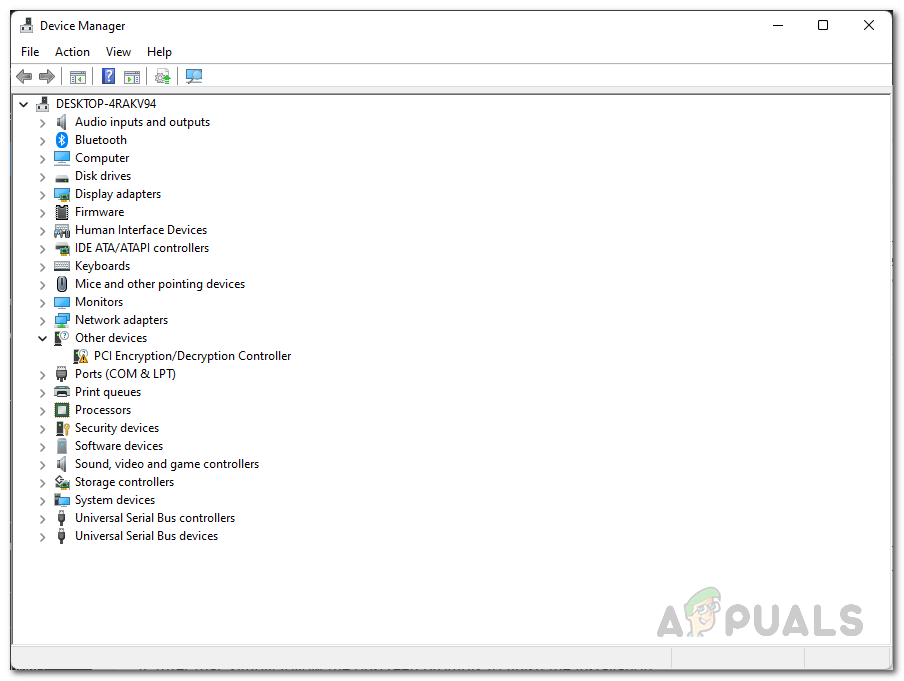
Device Manager - From the drop-down list, locate your printer and right-click on it. Click on the ‘Uninstall Device‘ option.
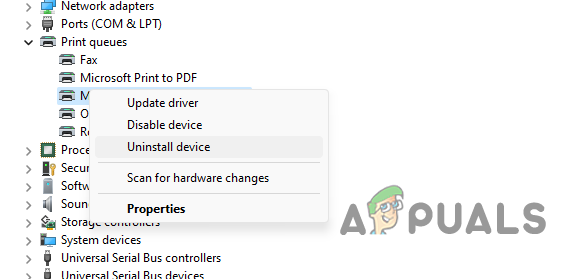
Uninstalling Printer - After that, head to your printer manufacturer’s website and download the latest drivers available for your printer.
- Before you install the new drivers, restart your computer.
- Once your PC boots up, install the latest drivers and see if the issue goes away
If you still encounter the ‘Print Spooler service not running’ error message, proceed to the next method below.
9. Repair Corrupted System Files.
Finally, if none of the methods above have freed you from the problem in question, it is very likely that the issue is occurring due to the corruption of the system files. In such a scenario, you can use two built-in utilities to repair the corrupt files.
The utilities in question are System File Checker (SFC) and Deployment Image Servicing Management (DISM). Running these scans will locate corrupt files and replace them with functioning copies. To do this, follow the instructions below:
- First, open the Start Menu and search for the command prompt. Click the “Run as administrator” option to open it.
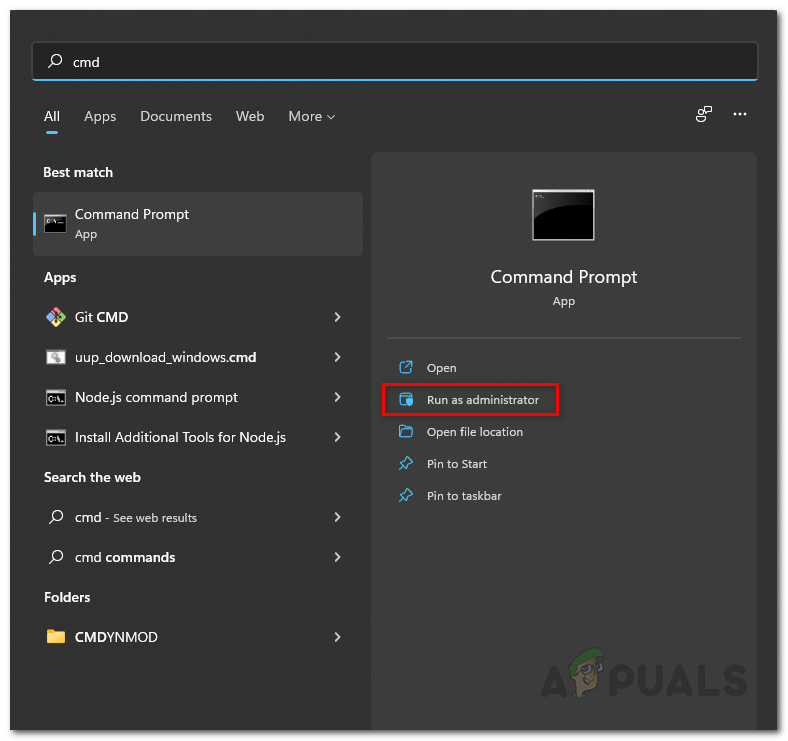
Opening up Command Prompt as Admin - Once the command prompt window is open, type in “sfc /scannow” and then press Enter.
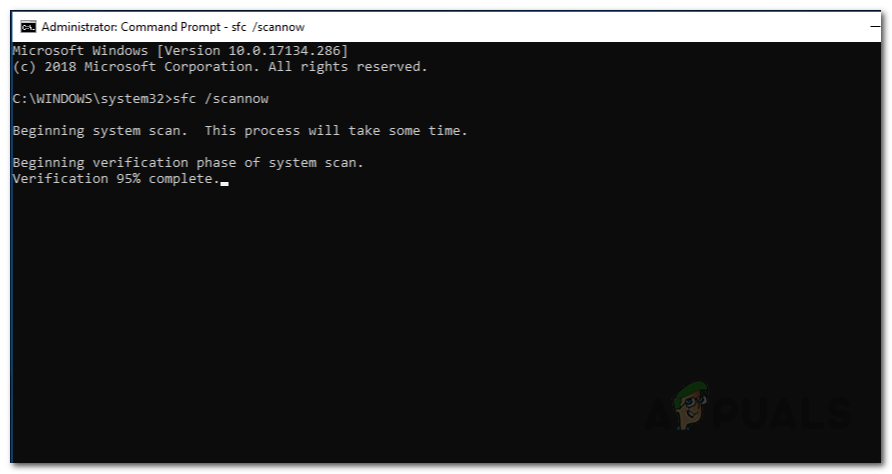
Performing SFC Scan - Wait for the SFC scan to complete the system scan and search for any corrupt files.
- After the SFC scan, type in “dism /Online /Cleanup-image /RestoreHealth” and press Enter.

Running DISM Utility - Wait for the DISM utility to restore any corrupted files.
- Once you do that, see if the problem still persists.